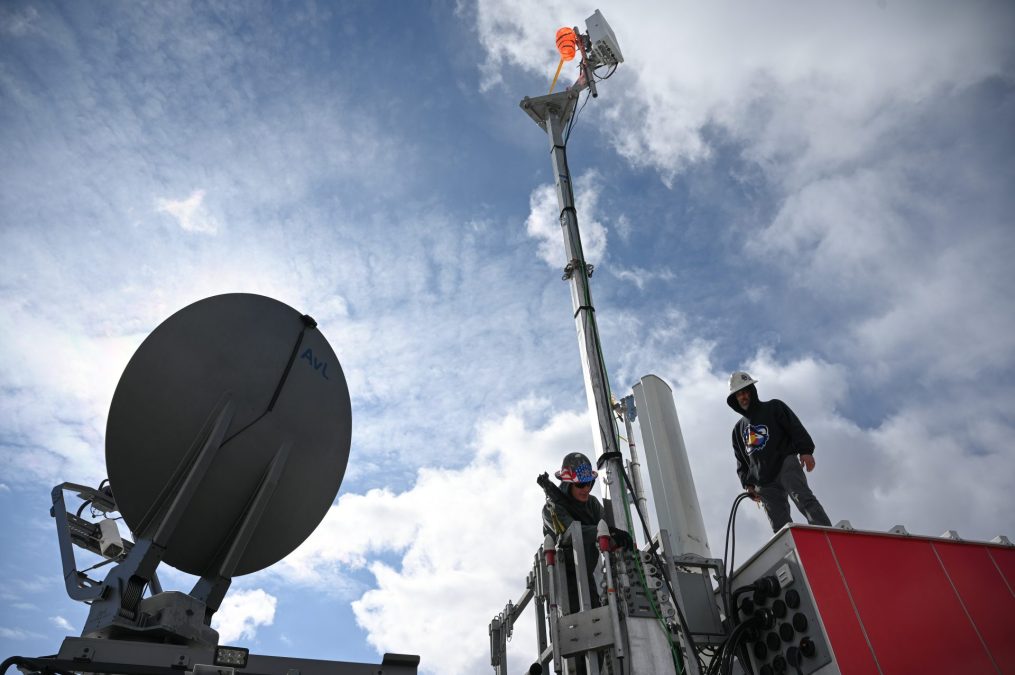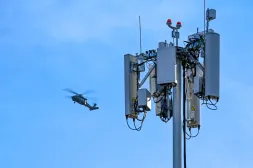Pentagon CIO greenlights 5 large-scale spectrum sharing tech demonstrations

The Pentagon’s chief information officer and the National Spectrum Consortium have awarded five contracts to industry and academia teams to conduct large-scale demonstrations of new spectrum-sharing capabilities.
Peraton Labs, Interdigital Communications, Nokia Federal Solutions, RTX BBN Technologies and the Kostas Research Institution at Northwestern University will all serve as project leads for the Advanced Spectrum Coexistence (ASC) demonstrations, the Defense Department CIO announced Wednesday. Each team received an other transaction agreement from the National Spectrum Consortium for the effort.
Formerly known as Advanced Dynamic Spectrum Sharing Demonstration (ADSSD), the program aims to validate emerging capabilities that would allow the Pentagon and private sector to simultaneously operate on the same electromagnetic spectrum band. Vendor teams will test advanced spectrum-sharing technologies, and the results will inform the government’s future work with the private sector on the issue.
“The Advanced Spectrum Coexistence Demonstration is a critical investment for our national security and economic competitiveness that aligns to Presidential priorities. Innovative solutions for spectrum sharing promotes warfighter lethality to ensure our military has access when needed.” Katie Arrington, who is performing the duties of Pentagon CIO, said in a statement.
The Defense Department’s access to the spectrum has been the subject of debate for years. Each of the military services use the spectrum — namely the 3.1-3.45 GHz S-band — to operate different radars, weapons and other critical electronic systems. However, the telecom industry has been lobbying for parts of that spectrum to be auctioned off so they can be used for commercial and civil 5G wireless technology.
While discussions over spectrum access have been going on between Pentagon officials, lawmakers and industry for decades, the issue returned to the forefront following President Donald Trump’s announcement that the United States would develop a large-scale homeland missile defense capability known as Golden Dome.
“This is about to be a heavily funded program that requires connectivity for detection, for alert and then for counter-action,” Mari Silbey, chief program officer at the National Spectrum Consortium, told reporters in September. “The bands that DOD wants to use for this are highly, highly coveted both within the federal government … as well as from commercial industry.”
Experts have repeatedly said that the best long-term solution for competing spectrum access is dynamic spectrum sharing — an emerging capability that allows multiple users to access the same frequency band of the EMS without creating interference. By leveraging different communications and artificial intelligence technologies, dynamic spectrum-sharing solutions can allocate bandwidth based on traffic demand and specific user requirements.
The tech could bring additional benefits. Silbey noted that dynamic spectrum sharing can create more agility for warfighters conducting operations in the EMS.
“It will help them defend their access to spectrum, to keep those communication lines open. By the same token, they can use it from an offensive perspective,” she said. “If they have the ability to move around in the spectrum space, they will have more opportunities to transmit and try to jam and use electronic warfare to disrupt the communication links that their adversaries have.”
According to the request for proposals for the ASC Demonstrations released earlier this year, experiments are expected to begin in November. Once completed, results will be used to complete a follow-on study for dynamic spectrum-sharing ops mandated by the Biden administration’s 2023 National Spectrum Strategy.






